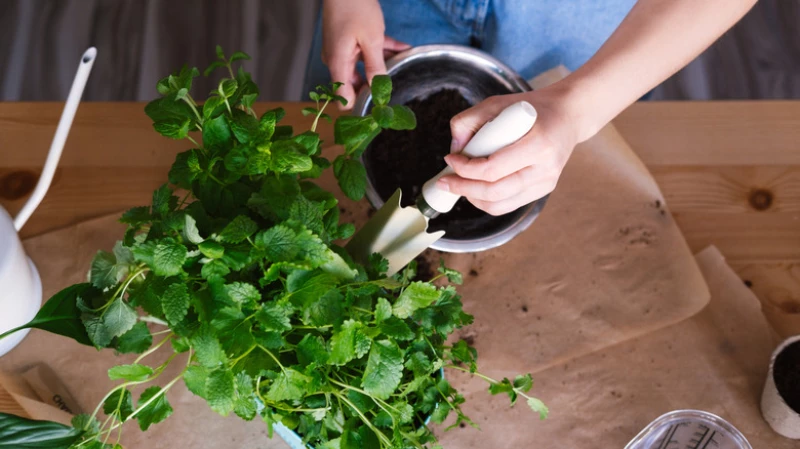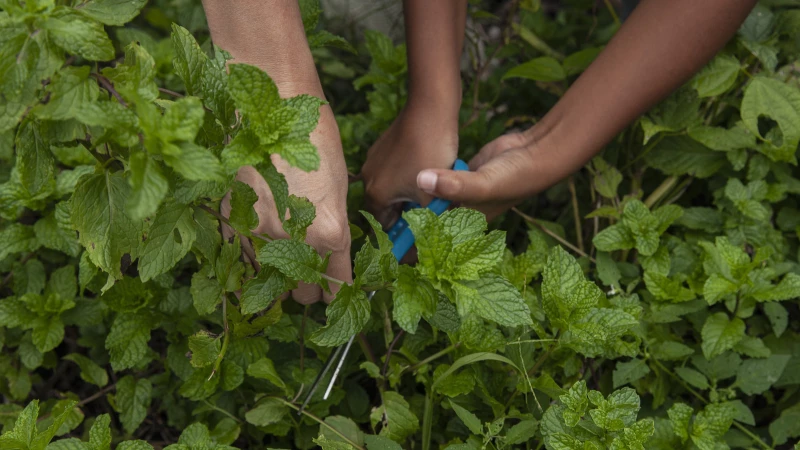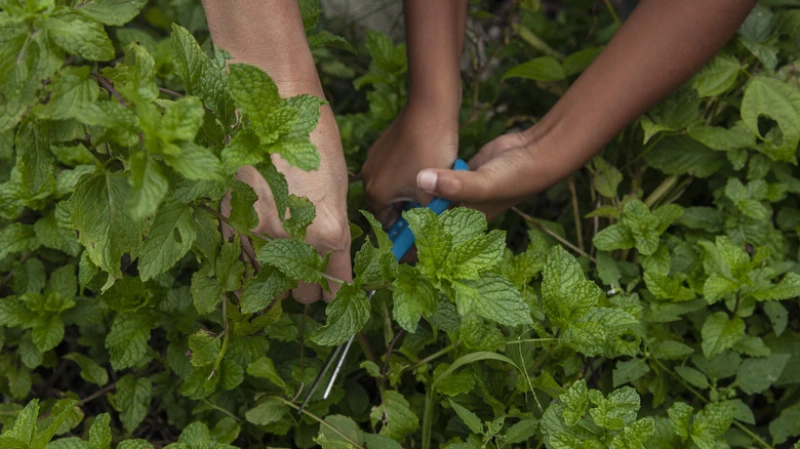Chocolate mint, also known as Mentha x piperita f. citrata, is a unique variety of peppermint with purplish-brown stems. Its aroma is often described as a combination of peppermint and cocoa, with some noting a hint of orange fragrance. This plant is gaining popularity in the world of edimental gardening, as it not only adds beauty and scent to your garden but also provides a delightful flavor. Additionally, if you allow the plant to flower in the summer, it will attract pollinators, making it a favorite among nature enthusiasts.
While mint is generally considered an easy plant to grow, it is not without its vulnerabilities. Mistakes such as inadequate light or water, using the wrong type of soil, and neglecting signs of pests and diseases can quickly lead to the demise of your chocolate mint plant. It is important to be attentive and provide the proper care to ensure the longevity and health of your plant.
Mistakes with care requirements can decimate chocolate mint plants
A common mistake many make with chocolate mint (along with other mint types) is either under or over watering the plant. Underwatered mint can quickly shrivel and die, especially if it is grown in full sun. Don't forget that container plants generally dry out more quickly than those grown in the ground, and since this invasive plant needs to be in a container, it could dry out faster. Overwatered mint, on the other hand, can suffer from root rot, particularly if it is planted in poorly-draining soil. This is why you must use a proper potting mix instead of simply filling your mint's container with garden soil, which compacts in containers. This could damage or even kill your mint by preventing water and air from circulating. Use a good-quality potting mix and check the moisture level of the top layer of soil before watering to ensure your mint gets the exact amount of water it needs.
Don't Forget to Check Your Chocolate Mint for Pests and Diseases

Chocolate mint is a resilient plant, but it is still susceptible to pests and diseases. One common issue that can devastate your chocolate mint is mint rust, a fungal disease that can quickly spread and destroy your plants. It is important to regularly check your mint for signs of infection, such as brown spots and leaf loss. If you notice any signs of rust, it is crucial to act quickly and remove the infected leaves to prevent the disease from spreading to the rest of the plant. In severe cases, it may be necessary to destroy the entire plant to stop the spread of the disease.
It's important to note that while minty scents can repel rabbits, deer, and other mammals, this doesn't mean that your chocolate mint plant is immune to insects like aphids, thrips, and spider mites. Many people make the mistake of ignoring signs of these critters. To prevent any problems, make sure to regularly inspect your plants. If you notice a mild infestation, you can try removing the bugs by hand or using water to spray them off. For more severe infestations, you may find neem oil to be helpful. Neem oil is a natural insecticide that is effective against aphids and spider mites. However, it's important to be cautious as neem oil can cause skin irritation and harm beneficial insects. Always read the instructions carefully before applying any pesticides. If you plan on bringing your chocolate mint plants indoors for the winter, be sure to thoroughly inspect them for pests and diseases beforehand.








